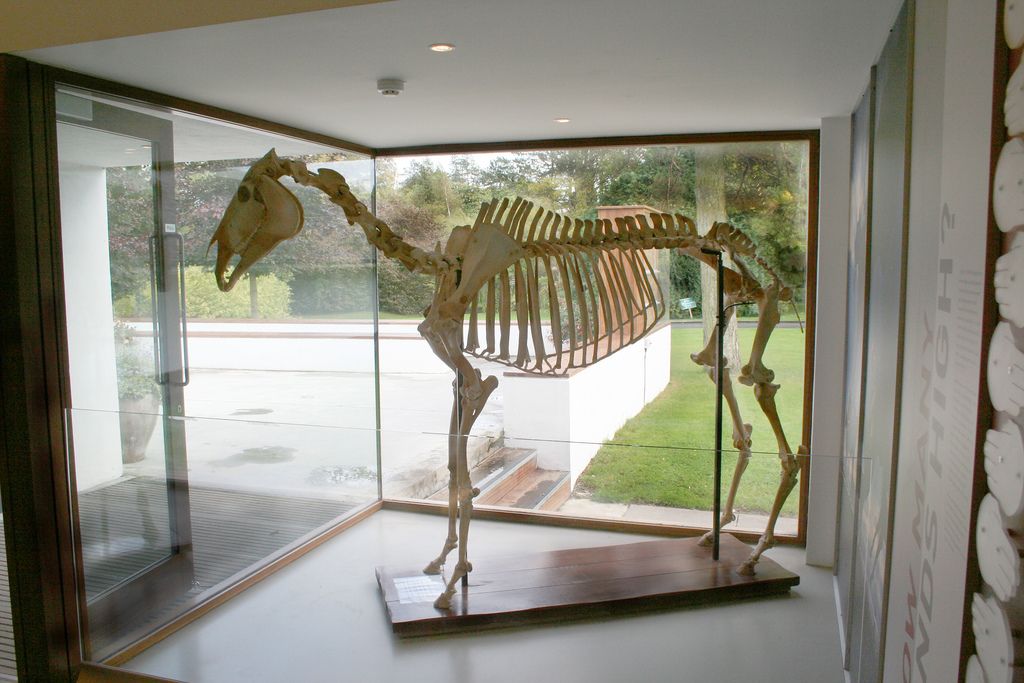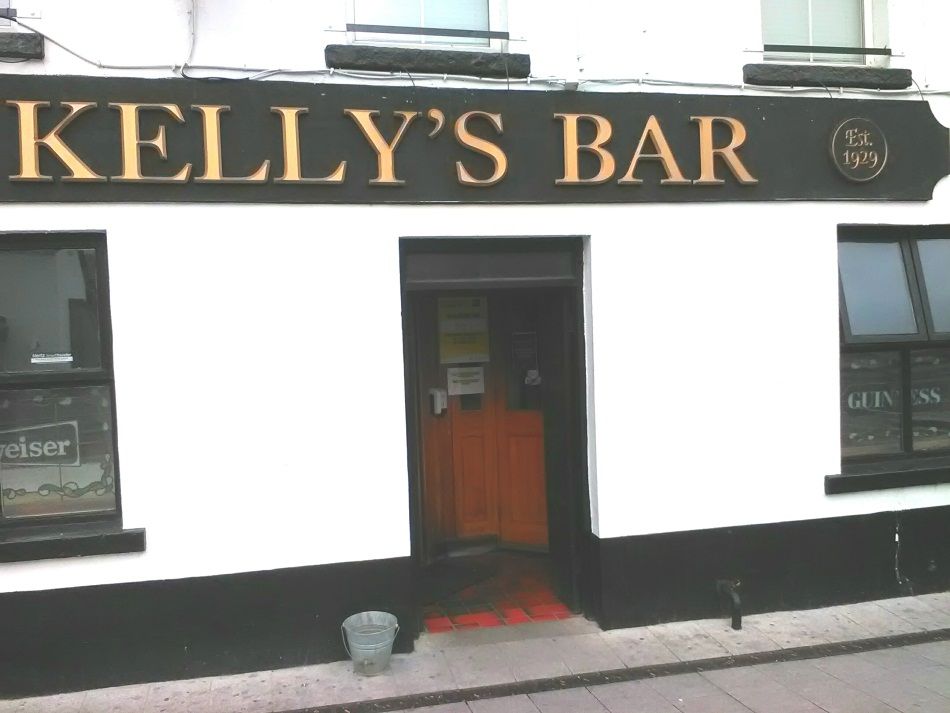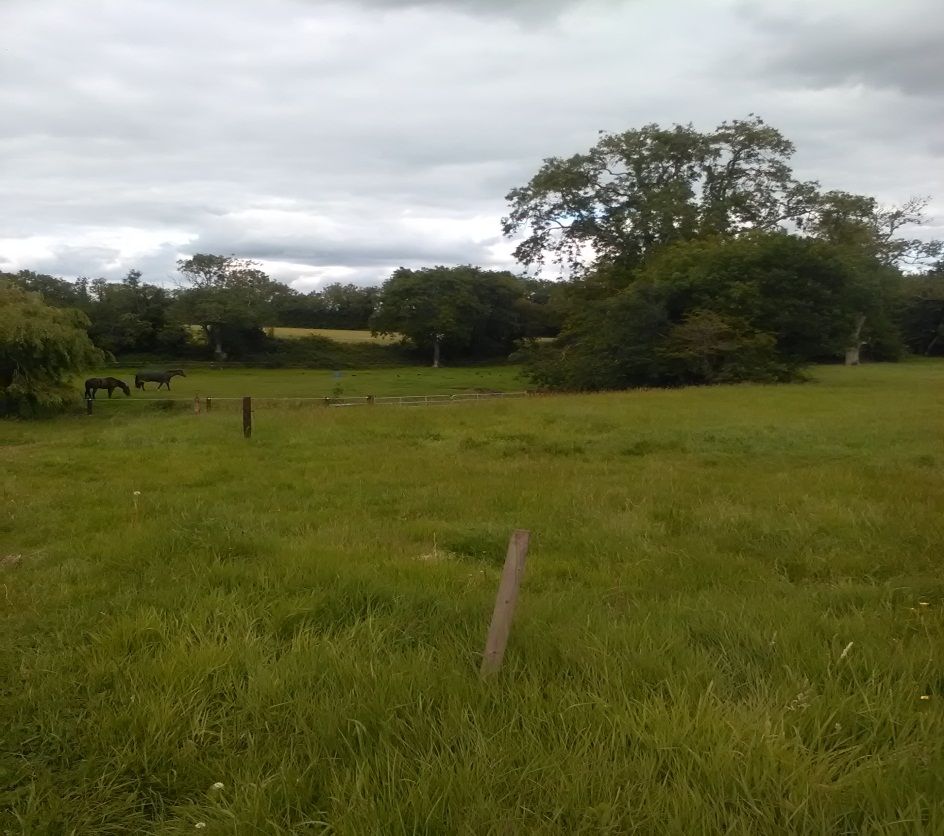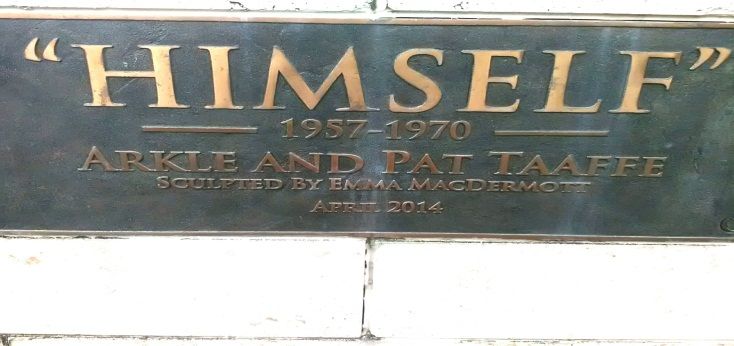An raibh a fhios agat? Did you know?
Arkle the Irish Legend
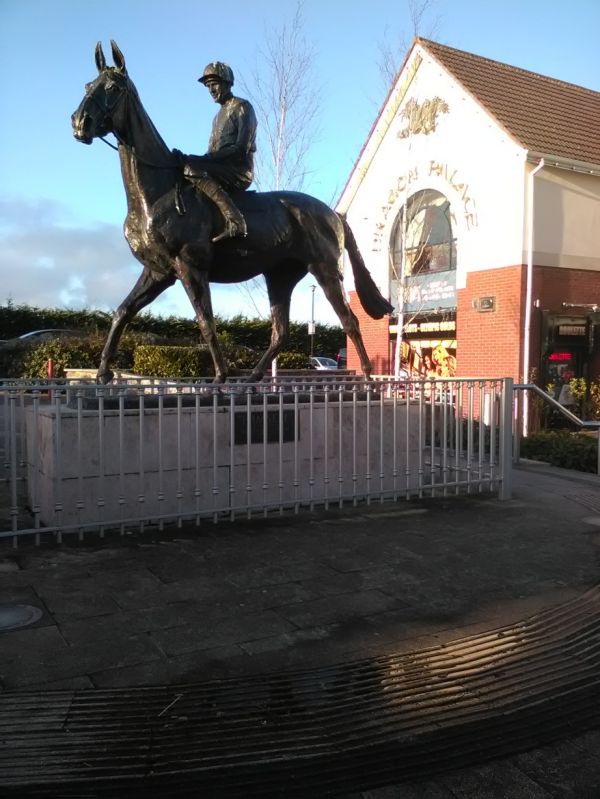 The stuff of legend can apply to many things in life. It can evoke memories of childhood fantasies of emulating a great sporting icon for example. If Hurling is your passion that might be memories of Christy Ring lining out in the colours of his native Cork or more recently perhaps DJ Carey of Kilkenny or Nicky English of Tipperary slotting over points to beat the band. If you prefer soccer it might be Bestie (George Best) beating defender after defender until the net bulges and you are left mesmerized but in awe. More recently again it might have been the pride and unadulterated male envy of watching the ladies hockey team reach the promised land of hockey heaven by announcing their arrival at the Hockey World Cup final. It can be different things to different people but the great leveller for most of us is perhaps sport, full stop. If we step outside our comfort zone of armchair smugness and tread on the tread mill of sporting immortality in all its glory can we imagine an animal holding that mantle, that of sporting immortality, of greatness, uniqueness or is that just that we can’t think outside the box, or even the horsebox.
The stuff of legend can apply to many things in life. It can evoke memories of childhood fantasies of emulating a great sporting icon for example. If Hurling is your passion that might be memories of Christy Ring lining out in the colours of his native Cork or more recently perhaps DJ Carey of Kilkenny or Nicky English of Tipperary slotting over points to beat the band. If you prefer soccer it might be Bestie (George Best) beating defender after defender until the net bulges and you are left mesmerized but in awe. More recently again it might have been the pride and unadulterated male envy of watching the ladies hockey team reach the promised land of hockey heaven by announcing their arrival at the Hockey World Cup final. It can be different things to different people but the great leveller for most of us is perhaps sport, full stop. If we step outside our comfort zone of armchair smugness and tread on the tread mill of sporting immortality in all its glory can we imagine an animal holding that mantle, that of sporting immortality, of greatness, uniqueness or is that just that we can’t think outside the box, or even the horsebox.
Introduction
Sporting adversaries have filled the pages of broadsheets and tabloids long before the advent of technological inventiveness. In historical confrontations the horse has often played a major role. In the Napoleonic Wars of the 19th century Napoleon and the Duke of Wellington both paraded on horseback at the decisive Battle of Waterloo; both animals coming from the Emerald Isle. Indeed the horse has a long and proud association with Ireland. At the National Stud in County Kildare which incorporates the Japanese Gardens for instance you can find the skull of a 13th century horse found at Church Place in Dublin according to Cohen and Cohen (2001/2) on display. You will also see the skeletal remains of a horse regarded as the greatest steeplechaser ever. His name was Arkle.
Beside the remains you will also see an X-ray which shows the pedal bone fracture which ended his career. Such was this horses’ presence that he is still spoken of in awe. His short but illustrious career left a mark on the psyche of the Irish equine community that still fills the memory bank of yesteryear but more so where arguments rage as to who was the champion of champions. The National Stud is situated in a place called Tully in County Kildare which has a long association with the story of the Irish horse to which we will revert later. It should be recalled that the sport of Steeplechasing or point-to-point first took place in Ireland it is said in 1752. The steeple of a church was both the starting and finishing point of the race.
Perusing photographs and newspaper clippings of the great Arkle you begin to get a sense of what made this horse special and adored by so many. If he can command the respect of holding court in the company of J.F.K. (John Fitzgerald Kennedy, former US president) and the Pope of Rome on the mantelpieces of the many, then in Ireland at least you know you are witness to something extraordinary. Arkle was trained by the legendary Tom Dreaper of Greenogue which is situated close to the town of Ashbourne in the county of Meath as the horse gallops. Reared partially on a diet of Guinness and eggs no doubt helped in adding to the folkloric allure of this extraordinary horse. Stories still fill the rafters of a favourite sporting haunt in the town where life is about sport and sport is about life. The sporting haunt in question being Kelly’s bar which as Anne Holland (2013) remarks ‘was a haven for horseman in the 1960s’.
Indeed Arkle’s first victory was celebrated there. He had finished first in the Bective three mile Maiden hurdle at Navan, Co.Meath. The prize money was the staggering amount of £ 133.On that momentous day Arkle had been ridden by Liam McLoughlin. The story of Arkle however will be forever associated with the irrepressible Pat Taaffe. Arkle arrived at Greenogue in Aug 1962 according to Holland (2013) and came under the tutelage of the famous Tom Dreaper. Dreaper was well established as a trainer and under his stewardship he built a team around the horse that would lead it to world prominence. Indeed Holland (2013) opines that ‘Arkle and Pat Taaffe were more than jockey and horse; they were good friends, both of them’. He wasn’t the first Arkle; his predecessor can be traced back all of sixty years before “Himself” arrived on the scene. Himself first saw the light of day in 1957 the son of ‘Bright Cherry’ at the Ballymacoll Stud in County Meath close to the home-place of Mary Baker at Malahow, Arkle’s owner, according to Holland (2013). The gelding Arkle was bred to be sold and such was the case when in August 1960 he was dispatched to the Royal Dublin Society (RDS) Horse Show in Dublin. He subsequently realised double his reserve which had been set at £500. Anne, Duchess of Westminster purchased him for 1,150 guineas. Arkle got his name from a mountain in Scotland in fact from the Scottish Highlands where the family of the duchess had an estate. He was given the sobriquet “Himself” and it stuck. He would subsequently alternate his training and rest routine schedule between Ireland and England as the situation demanded given that he raced in both countries at the time.
Seán Magee (2005) opines that Arkle wasn’t the finished article but it was the team around him that helped mould a possibility into a certainty. Indeed when “Himself” arrived at the famous racing stables called Greenogue in 1961on the Meath/Dublin border, the event wasn’t marked by fanfare. Instead the lads weren’t impressed so much so that “ head lad Paddy Murray described their new charge as ‘unfinished-and he moved bad’; Paddy Woods-senior stable lad remembers him as ‘gangly’; and stable jockey Pat Taaffe observed that…
‘you could have driven a wheelbarrow through his hind legs’. ‘As a result of his perceived awarkedness he was relegated to the rear of the yard until it was decided to move him some two years later. Hence he became the celebrated occupant of box number 7 which would become the most famous address in the equine world. Many of his legion of fans simply addressed their letters to ‘Arkle’ Ireland and that sufficed such was his popularity. If the horse has been domesticated for thousands of years or so they say, what makes the horse and humans so inseparable? Indeed, what are its historical connections with Ireland?
The Vikings
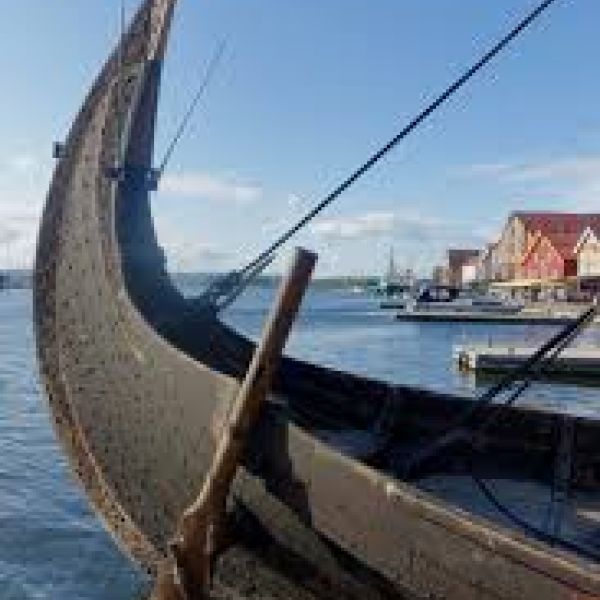 The horse was revered in the Viking world predominately in Norway. In Norway the horse played a vital role in food production, religious and folkloric tradition and in life and indeed the afterlife. The practise of the Vikings in burying their exalted with their weapons and slaves also sometimes included their horses. According to Sikora (2003/4) every region of Norway has produced evidence of horse burials. Outside of Norway the highest concentration of horse burials appears to be in Iceland with over one hundred while Ireland features with finds of harnesses-mounts at Athlumney in Co.Meath. These compare with mounts discovered at Donore also in Meath. Also at Islandbridge, Dublin which was the site of a major Viking cemetery, horse remains have been discovered.
The horse was revered in the Viking world predominately in Norway. In Norway the horse played a vital role in food production, religious and folkloric tradition and in life and indeed the afterlife. The practise of the Vikings in burying their exalted with their weapons and slaves also sometimes included their horses. According to Sikora (2003/4) every region of Norway has produced evidence of horse burials. Outside of Norway the highest concentration of horse burials appears to be in Iceland with over one hundred while Ireland features with finds of harnesses-mounts at Athlumney in Co.Meath. These compare with mounts discovered at Donore also in Meath. Also at Islandbridge, Dublin which was the site of a major Viking cemetery, horse remains have been discovered.
But other sources suggest that this practise can be traced back to the Neolithic period and point to the horse remains found at Newgrange County Meath. However, McCormick (1985) in his Journal Article refers to the findings of van Wijngaarden-Bakker (1982) who cautions against any definitive conclusions being drawn from any animal bones found in such circumstance. She points out that accessibility was an issue as this tomb lay exposed for a period and thus was easily accessible to secondary deposition of animal remains. This could have been caused by either human or animal activity she opines.
The Irish draught-horse is one of the oldest specimen of horse that Ireland produced according to research studied by R.F.Scharff (1908/9) while lamenting the fact that there was a deficit in terms of a proper study in this area. He did refer to the fact that some authorities put forward the argument that the Connemara pony was of ancient stock without specifying who those authorities were. He is more specific in his accounts of another horse that inhabited these shores when he reflects on records held in Scotland that account for the quality of Irish horses serving with Irish troops in Scotland in the 13th century. These animals were called Hobbies and apparently were much sought after not just in these islands but on the continent as well. He further opines that it was the quality of the soil particularly from Ireland’s central plain (being of limestone formation) that produced such quality animals. Scharff (1908/9) explores the possibility that Arab horses may have been introduced to the West of Ireland millennia ago hence he maintains the resemblance between it and the Connemara pony.
Tully and the Knights
Returning to Tully in County Kildare Cohen and Cohen (2001/2) throw light on its connection with the Knights of Malta. Apparently, the Black Abbey was established here in 1212 AD. Indeed, they established chapters throughout Europe in the twelfth and thirteen centuries of which Tully was one. The brothers opine that horses may have also been trained here for the knights to engage in their military adventures if you would. During the sixteenth century and the Reformation the Abbey fell into disrepair and despite Irish Independence in 1922 it didn’t become an asset of the State until 1945 when it became The Irish National Stud Company.
In the 18th century with the opening of Ireland’s first horse ways if you would, coach services to different parts of the country were established emanating in the main from Dublin. Charles Bianconi who is regarded as the person who established public transport in Ireland took over the reins in 1815 in establishing a horse drawn carriage service that ran up until the 1850s. At the height of its success Bianconi was using 1300 horses and 100 carriages. On average these could carry between 4-20 passengers and were the major mode of transport prior to the advent of the railway according to M.O.C./Bianconi/Watson. Bianconi is remembered perhaps as a disciplinarian, but equally someone who looked after sick employees and horses. During WW2 or The Emergency as it was called in Ireland horses pulled barges on the Royal Canal bringing goods to and from Dublin. They would also continue to play a major supporting role in the age-old rivalry between Ireland and England.
Ireland V England
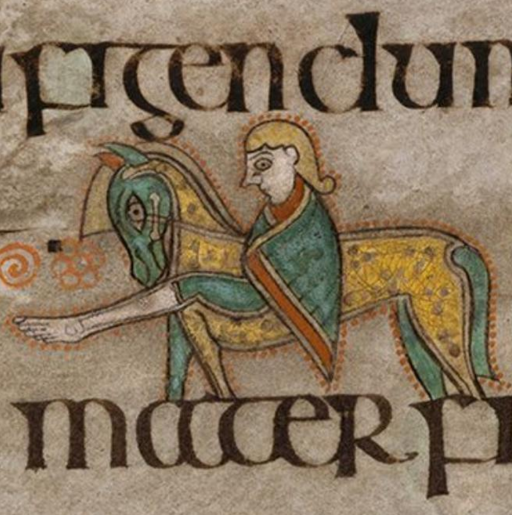 It was 1964 and the disciples of all things equine were headed for Cheltenham. England’s Mill House was favourite to lift the Cup. There was however, a little pretender from Ireland named Arkle who had the audacity to challenge the champion. Willie Robinson on Mill House, the clear favourite, at least in the eyes of the home crowd, and Pat Taaffe on the young pretender Arkle, a mismatch surely. Tony Power ( 1992) writing in the Irish Press put it in very eloquent terms his admiration for Arle’s achievements when he wrote, “Arkle bestrode those years like a colossus”. The pre-race build-up made for an eagerly anticipated rematch. Mill House had already claimed top hoof in 1963 when he beat Arkle into third place while claiming the honours at the Hennessy Gold Cup at Newbury in England. But there would be a rematch at the Cheltenham Gold Cup in 64. Tom Dreaper Arkle’s trainer predicted that his horse would do the business this time so the scene was set.
It was 1964 and the disciples of all things equine were headed for Cheltenham. England’s Mill House was favourite to lift the Cup. There was however, a little pretender from Ireland named Arkle who had the audacity to challenge the champion. Willie Robinson on Mill House, the clear favourite, at least in the eyes of the home crowd, and Pat Taaffe on the young pretender Arkle, a mismatch surely. Tony Power ( 1992) writing in the Irish Press put it in very eloquent terms his admiration for Arle’s achievements when he wrote, “Arkle bestrode those years like a colossus”. The pre-race build-up made for an eagerly anticipated rematch. Mill House had already claimed top hoof in 1963 when he beat Arkle into third place while claiming the honours at the Hennessy Gold Cup at Newbury in England. But there would be a rematch at the Cheltenham Gold Cup in 64. Tom Dreaper Arkle’s trainer predicted that his horse would do the business this time so the scene was set.
Tony Power (1992) recalls the confidence of one of the English fans who quipped “You Irish think all your geese are swans but you’ll see this afternoon”. The two jockeys had a bet between them that the loser had to buy the winner a Savile Row suit. Willy Robinson had to pick up that particular bill as Arkle won quite handsomely. Jimmy Walker ( 1994) commenting on the race is very wholesome in his praise in that to win at the Mecca of steeplechasing, Cheltenham, put the Irish on Cloud Nine if you would. The fact that Arkle won it three times he maintains lifted the country as well. He goes on to wax lyrical about the horse by recalling his victory at the 1965 Whitbread Cup. Apparently thousands attended just to see Arkle and when he was paraded around to the adoration of his fans it was as if to acknowledge that he knew the champion that he was. The king of the sport of kings. Arkle had answered his doubters and the legend grew. Himself had arrived in no uncertain manner.
Dominick Behan brother of the more famous Brendan penned a song in honour of the famous 64 victory which he called simply ‘Arkle’. The racing horse also appeared on Ireland’s longest running TV chat show The Late Late Show, appeared on postage stamps and received fan mail from all over the world. He also was responsible for an explosion in earthenware and next to the pictures of the most holy you might also find a cup and saucer with the head of ‘Himself’ looking out at you. Jimmy Walker (1994) recounts that Arkle was Ireland’s most famous export. Indeed Walker (1994) opines that he had reached cult status among his admirers in Ireland and beyond. Indeed, the brewers Guinness joined the legion of admirers by supplying the necessary supply of the Black Stuff during the training period at Greenogue from December to April to Arkle and friends, according to Magee (2005).
His inaugural race took place at a track in Mullingar, County Westmeath in December 1961. Alas like Arkle that track is no longer with us. He had been building his reputation steadily. After three Cheltenham wins the horse looked unassailable. As the year 1966 drew to a close he was simply the best and regarded as the best steeplechaser in history, according to Magee (2005). He had raced on five occasions in the 1965-66 season and had won each time. But tragedy would strike. Old friends Arkle and Pat Taaffe would command centre stage yet again but for a different reason. Arkle had returned to Ireland and Greenogue in February 1967 after convalescing in England. He was met at Dublin Airport by a big crowd of supporters.
The year 1966 had started brightly for’Himself’. He was a regular in the winners enclosure not having been beaten since 1964.Indeed, in a 1966 TV Times poll carried out in England he was more popular than the Beatles and Bobby Moore the captain of the 66 World Cup winning team. The poll was for the most popular personality of 1966. However, Pat Taaffe noticed that all was not right with his old friend. In addition to Cheltenham ‘Himself’ had also featured in the Hennessy Gold Cup. Prior to him running in the November 1966 outing he had sustained an injury while training at Greenogue Killsallaghan. It was a cut, nothing serious, but enough for him to miss a week’s training.
Arkle was subsequently beaten in the Hennessy by Stalbridge Colonist by half a length, his first defeat since 1964. His supporters were deflated but ‘Himself’ was still champion. But was this the beginning of the end? However, it was decided to race him again in the SGB Handicap Chase at Ascot on 14th December 1966. Arkle returned to winning ways by some fifteen lengths from Sunny Bright in second. This was deemed an impervious ride by ‘Himself’ as he was conceding thirty five pounds. The champion was back to his best? But Pat Taaffe noticed that not all was well with his old friend. According to Magee (2005) the horse had jumped uncharacteristically to his left on the last three fences. It was noticed that when being unsaddled a slight cut was detected on his nearside front foot. This was not deemed anything unusual for a chaser and all seemed well. Indeed, he would run again on December 26th at the King George V1 Chase at Kempton, England.
The punters were expecting another battle royal between Arkle and his old nemesis Mill House, but the latter had to pull out of the race as the result of an injury. However, as the race got under way ‘Himself’ wasn’t jumping to his normal high standard. On approaching the last fence Arkle jumped well clear of his nearest rival, Dormant. But then on the home straight he struggled to get to the finishing line. He was beaten at the post by Dormant who won by a length according to Magee (2005). He continues by saying that Pat Taaffe was of the view that Arkle had probably struck a guard rail of a fence early in the race as he had noticed that the horse was jumping somewhat erratically. Despite this the horse continued to race as courageously as always. It was clear however, as the horse was being led to the unsaddling enclosure that he had injured himself badly, according to Magee (2005). The resulting X-ray would confirm the broken pedal bone. He would return to Ireland in Feb, 1967 but the future looked very uncertain.
Despite the best efforts of Tom Dreaper and his staff Arkle was deemed unfit to race again and so in October 1968 the Duchess of Westminster announced to the world that the horse regarded as the greatest Steeplechaser ever was being retired. But his fans were not to be denied. He was invited to London to appear at the Horse of the Year Show in October 1969 at Wembley. The event was also a charity fundraiser and Himself was according to Magee (2005) in his element as he paraded on six consecutive nights to his adoring fans. But alas the injury was causing a deterioration in Arkle’s overall condition and the stiffness in his legs was getting worse. Pat Taaffe visiting his old friend at Bryanstown in 1970 saw that the animal was in pain and after a visit by the vet it was decided to advise the Duchess to come to Ireland immediately. After a further inspection it was decided to put the great Arkle to sleep as he was in considerable pain.
In a fitting epitaph to Arkle from Magee (2005) a famous Dublin Balladeer Tommy Bracken penned the following:
But never again on a racecourse if we centuries we wait
Will we see your equal, Bold Arkle the Great,
So, from all of us now who loved you so well.
We’ll remember you always, Arkle-farewell.
Champions like Arkle are made in heaven; Tom Dreaper was quoted as saying. His record for those who like to round off statistics when arguing the toss are impressive. Sean Magee (2005) devotes a section of his book to illustrate the success of ‘Himself’.
- He ran in 35 races, 27 of which he won.
- He finished second twice, third three times fourth twice and unplaced once.
- In terms of prize money he won £78,464,5s.6d.
- While Pat Taaffe will always be associated with Himself he was also ridden by four other jockeys: Liam McLoughlin, Paddy Woods, T.P.Burns and Mark Hely-Hutchinson.
- He was unbeaten in eleven steeplechases in Ireland.
- He ran twenty races in Ireland, fifteen in England and never fell in a race.
Conclusion
Reputations are won and lost. Indeed battles are fought and lost but can carry a legacy as history teaches us. The sport of Kings is no exception one could argue because it is a battle, it is a struggle, it can be final. Super stars are celebrated long after their departure from the scene. Sometimes they leave gracefully, sometimes not. But they leave memories; they can cause passions to rise, arguments to get serious and people to pray. The roller coaster of emotions is all there. Horses are not everyone’s poison but that depends. Perhaps it is the affinity and proximity of working with horses and all that that entails that takes it outside of the realms of a St. Stephen’s Day meeting at Fairyhouse with the dreams of a winner or being in the enclosure when your favourite is paraded around with all the trappings of a victor. Horsey people would understand that.
This brief overview is an attempt to cobble together a short introduction to the story of ‘Himself, ‘of the horse in Ireland and its long association with us. In recollecting the short life of a remarkable animal that enthused thousands and brought world-wide admiration from the many it is fitting the racing enthusiast will argue that their Super Stars share equally their place in the annals of sporting immortality. In the history of steeplechasing many have come and gone. Arkle and Pat Taaffe live long in the memory. It might be argued that they gave Ireland a special status when the country most needed it. It proved perhaps that the underdog can win, ‘Himself ‘would be proud that he is remembered for doing that, in the Sport of Kings.
Bibliography
Dominic Behan Arkle - YouTube (Accessed on 15 Aug.2020)
https://www.youtube.com/5bbdfde0-31de-40f2-abf8-b5d34adbe62
Bianconi.M.O.C/Watson. J (1964) Bianconi: King of the Irish Roads.
Irish Historical StudiesVol. 14, No. 53 (Mar., 1964), p.76. Reviewed by J.G.Simms. Cambridge University Press.
Cohen. P& B (2001/2) The Irish National Stud: Ireland's Love Affair With the Horse. Journal Article. Journal of College Science Teaching. Vol. 31, No.4 pp. 276-277.
Holland. A. (2013) Arkle the Legend of “Himself”.The O’Brien Press Ltd. Rathgar Dublin 6.Ireland. ISBN: 978-1-84717-548-9
Magee. S. (2005) Arkle the Life and Legacy of ‘Himself’.Highdown.Berkshire, UK. ISBN 1-905156-16-2
McCORMICK.F. (2007) the horse in early Ireland. School of Geography Archaeology and Paleoecology Queen’s University of Belfast
Power.T. (1992) A Day we won’t forget. The Irish Press, Dublin Ireland.
Scharff .R.F. (1908/9) On the Irish Horse and Its Early History.
Proceedings of the Royal Irish Academy. Section B: Biological, Geological, and Chemical Science. Vol 27 pp.81-86. Journal Article
Sikora. M. (2003/4) Diversity in Viking Age Horse Burial: A Comparative Study of Norway, Iceland, Scotland and Ireland. The Journal of Irish Archaeology. Vol.12/13. Wordwell Ltd.
Walker.J. (1994) Arkle, the Lost Raider. Fortnight: Journal Article Fortnight pp.34-35 Fortnight Publications Ltd.
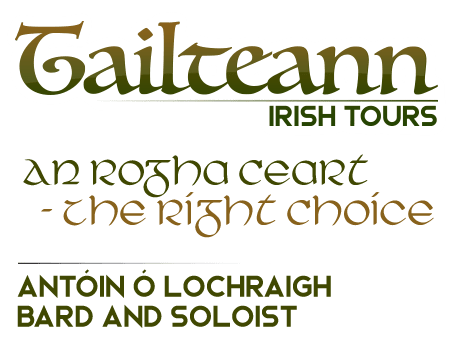
What You Can Expect
A walk through Dublin City in the company of a native Dubliner with the emphasis on history, culture and the great Irish ability to tell a story and to sing a song. In addition, and at no extra cost an actual rendition of a self-penned verse or perhaps a spot of warbling. I'd like to share my love of history with you, after all the past is our present and should be part of our future.
About The Tours
Tours are in English, with Irish translations, where appropriate. I also speak Intermediate level Dutch. Duration: 3 hours approx., with a short break in-between. Tour prices and booking options are available in the booking section.
The contact hours are Monday to Sunday, 09:00 - 20:00 IST.
Special Options
We can also arrange a half-day private tour for a maximum of twelve people. This incorporates a collection of parts of our three Tours combined. Tour duration 4-5 hours approx. A break for refreshments in between. Group of 2: €50 per person, Group of 3: €30 p.p., Group of 4 or more: €25 p.p. Refreshments: €10 approx. (This is an extra). Please contact us for details.
Copyright ©2025 Tailteann Tours
Designed by Aeronstudio™


